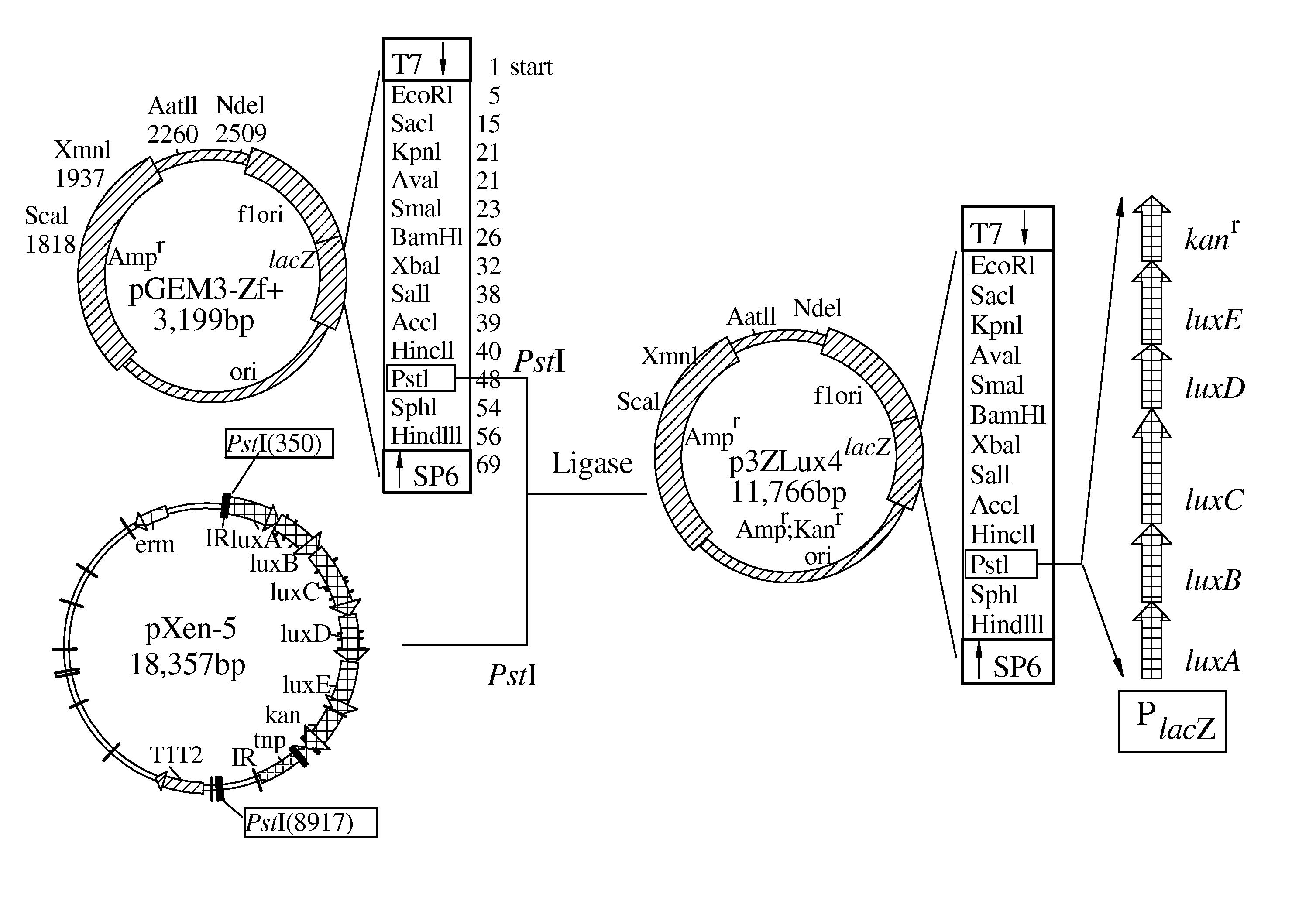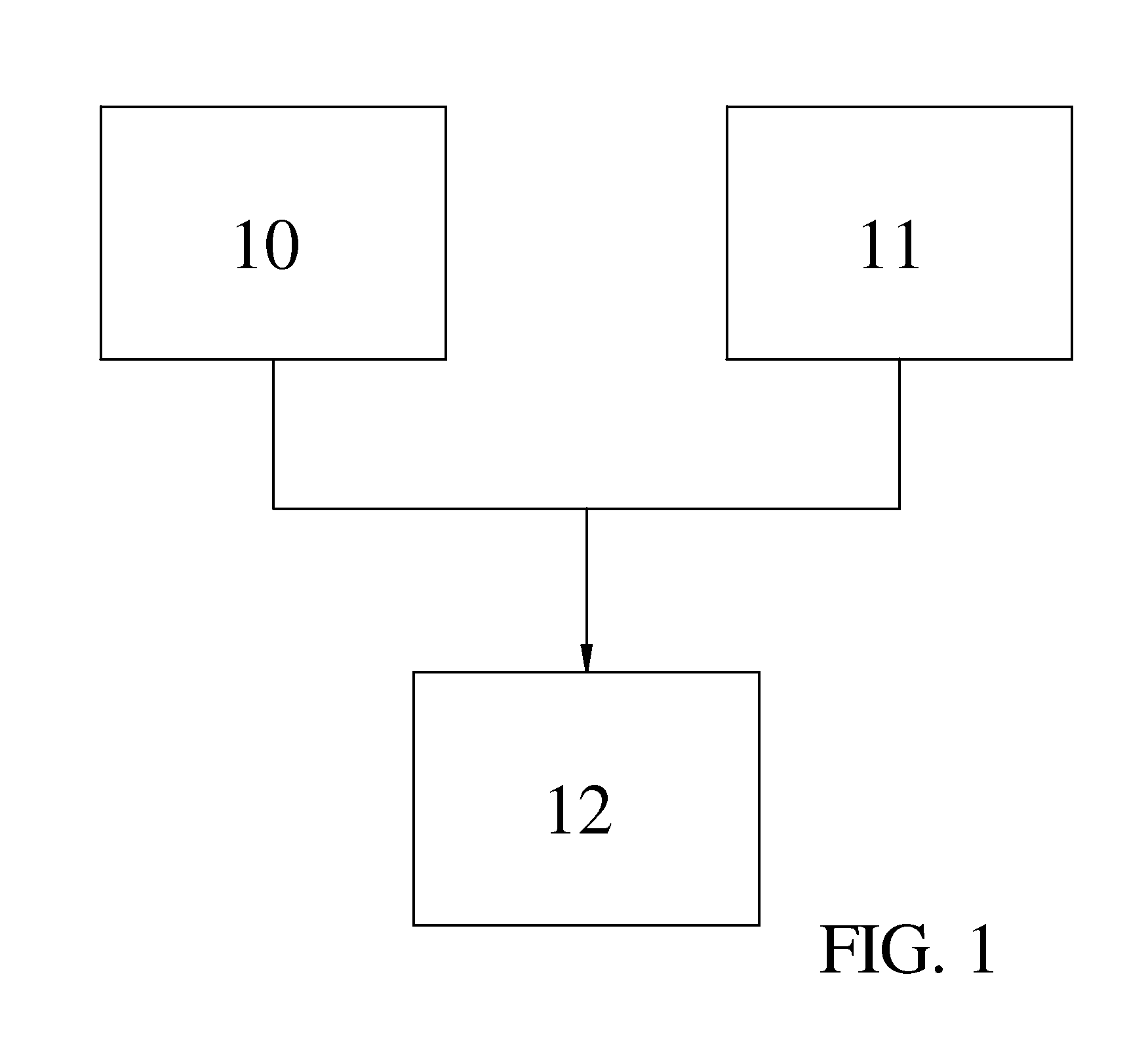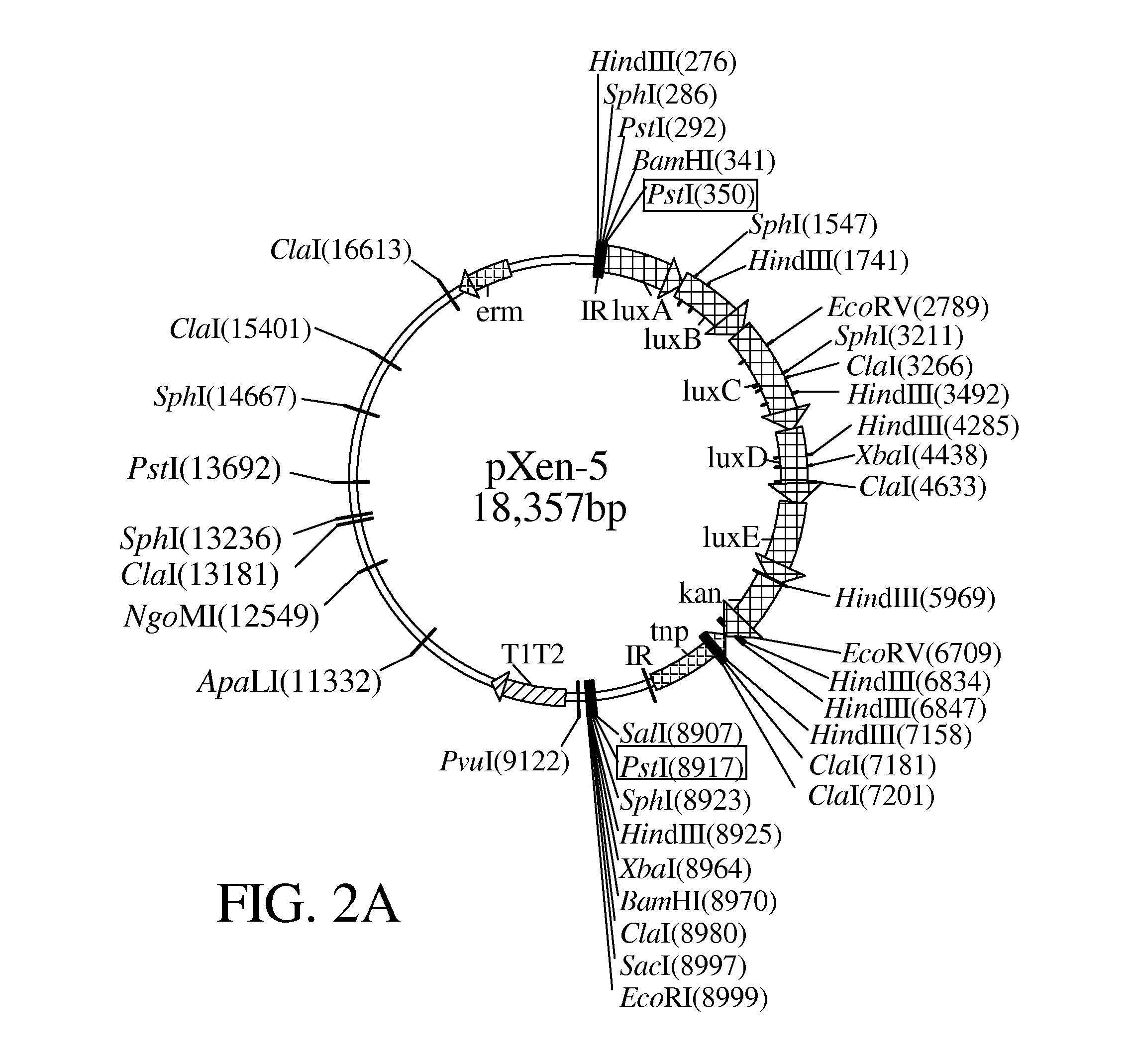Method for tracing gram-negative bacteria inside animal model using stable and bioluminescence-based expression system therefor
- Summary
- Abstract
- Description
- Claims
- Application Information
AI Technical Summary
Benefits of technology
Problems solved by technology
Method used
Image
Examples
Embodiment Construction
[0016]Referring to FIGS. 1 to 3B, a flow chart and plasmids in accordance with the invention are illustrated.
[0017]Steps of constructing this steady auto-bioluminescence plasmid of the invention are as the follow:
[0018](a) To clone a promoterless luxABCDE into a promoter-containing vector, so as to express the genes luxABCDE from the promoter.
[0019](b) To clone both at least one ColE1 replication origin and at least one drug resistance gene into a plasmid pSE34.
[0020](c) To merge the two clones from steps (a) and (b) together, so as to obtain a vector with the features of auto-bioluminescence, plasmid stability, and high copy number.
[0021]Processes of the invention are discussed in detail below.
(a) Construction of p3ZLux4 (10)
[0022]The promoterless luxABCDE-ken from a pXen-5 was cut and inserted into a pGEM3-Zf+ using a Pstl as cloning sites based on the Escherichia coli cloning system, where luxABCDE genes can be expressed through the control of a lacZ promoter of pGEM3-Zf+.
[0023]P...
PUM
| Property | Measurement | Unit |
|---|---|---|
| Volume | aaaaa | aaaaa |
| Volume | aaaaa | aaaaa |
| Volume | aaaaa | aaaaa |
Abstract
Description
Claims
Application Information
 Login to view more
Login to view more - R&D Engineer
- R&D Manager
- IP Professional
- Industry Leading Data Capabilities
- Powerful AI technology
- Patent DNA Extraction
Browse by: Latest US Patents, China's latest patents, Technical Efficacy Thesaurus, Application Domain, Technology Topic.
© 2024 PatSnap. All rights reserved.Legal|Privacy policy|Modern Slavery Act Transparency Statement|Sitemap



